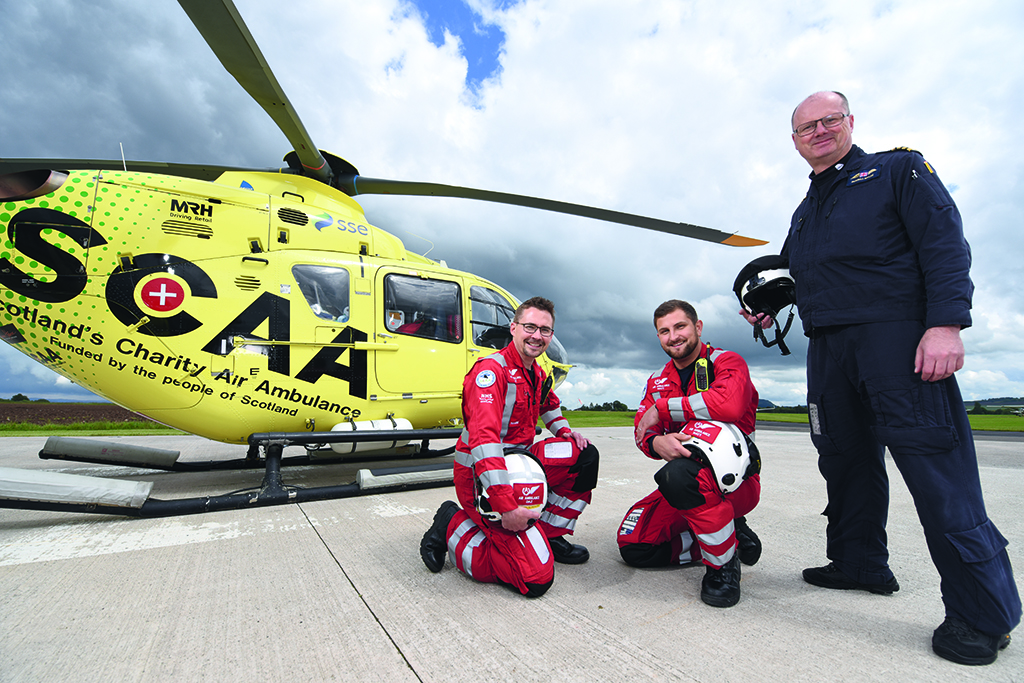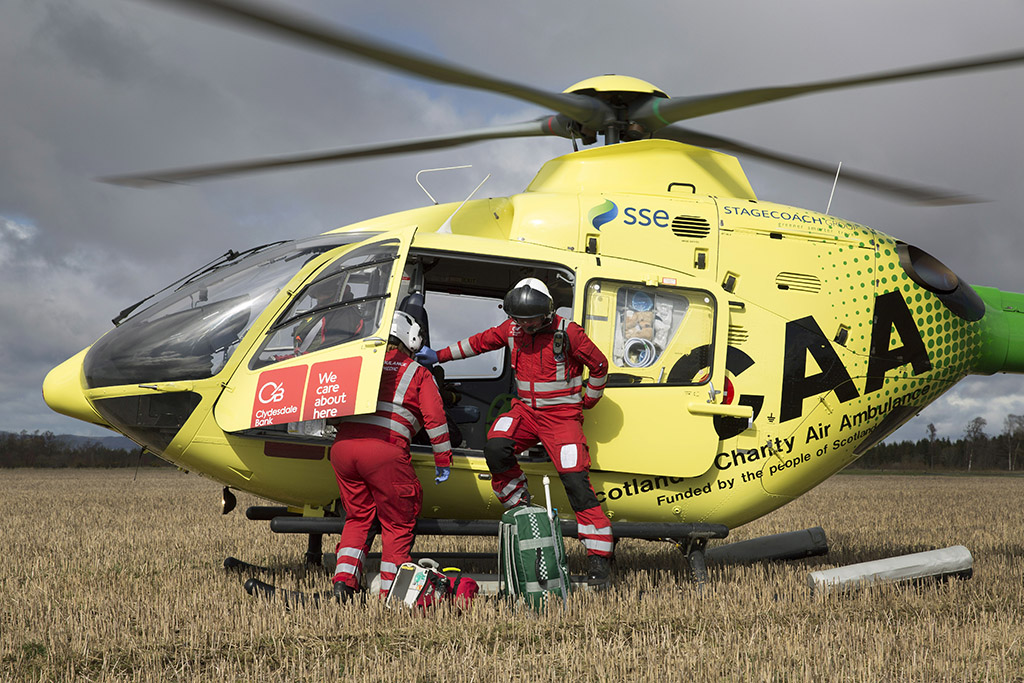
A sky full of stars with the air ambulance
As Scotland’s Charity Air Ambulance gears up for the launch of its new Aberdeen base and aircraft next year, Scottish Field talks with the team in Perth to learn of their experiences saving lives across the country.
Just 25 minutes. That’s the time it takes Scotland’s Charity Air Ambulance (SCAA) to reach 90% of the country’s population.
Whether it’s a broken ankle in the Highlands, a trauma patient on a remote Scottish island, or a horse-riding casualty on the west coast, it’s all in a day’s work for the remarkable pilots and paramedics that fly over our heads on a daily basis.
And while we all hope never to require the services of such everyday heroes, having an almighty team on standby for all eventualities is immensely reassuring; and more importantly, can be lifesaving.
Since launching their first SCAA aircraft – Helimed 76 – back in May 2013, an incredible 2,100 emergency missions have already been flown to traumas across the country, as well as to time-critical emergencies like heart attacks, strokes and major organ failure.
In 2018 alone, the charity’s team were airborne for 365 hours, flying help to communities. Forty percent of their outings were to tend to serious traumas.
On standby ten hours a day, seven days a week, the team that operates Helimed 76 out of Perth Airport has proved an invaluable lifeline to the country, and exciting plans to expand this support network have recently been unveiled – SCAA will be launching a new helicopter air ambulance in Aberdeen.

Paramedics Darren O’Brien and Matt Allen, and pilot Russell Myles work at the Perth base of Scotland’s Charity Air Ambulance (Photo: Angus Blackburn)
‘If you were a casualty in the heart of the Cairngorms, you’d be about 40 nautical miles from Aberdeen, so we’d be around 20 minutes away,’ explains Matt Allen, one of the Perth-based paramedics. ‘So in around half an hour, we could reach most of the north of Scotland from the new base.’
Though there are two government-funded helicopters in Glasgow and Inverness, SCAA relies entirely on donations and fundraising. Having set a hefty target of £6m to fund the new Aberdeen aircraft – Helimed 79 – the charity is confident it will be up and running by March 2020 and will build capacity to support the Major Trauma Centre in Aberdeen.
‘There has been a great deal of support from local people up in the north and the north east of Scotland because they can fully understand the benefit of a second aircraft,’ says David Craig, CEO of SCAA.
‘Fundraising will always be a challenge, but the past year has been a record fundraising year,’ added David. ‘There has been a huge swathe of support in the north east, so we’re quietly confident that will continue.’
Talking of prior experiences serving with SCAA, paramedic Darren O’Brien – who gave up a career in banking and the stock market to join the service – says: ‘One of the things I love about the job is the kind of bond you get; you get to know the people that you work with better than your family. You spend so much time with them and go through so much with them.
‘As I get older, it can be quite emotional seeing former patients come through the door as well. It’s brilliant if they’ve had a good outcome.’

Scotland’s Charity Air Ambulance pilot Captain Russell Myles drops off paramedics Julia Barnes and Craig McDonald (Photo: Graeme Hart/Perthshire Picture Agency)
While they are called to any manner of incidents, from people rolling lawnmowers over to getting stuck in the hills with a broken leg, Matt reflects on one of their experiences in a remote part of Scotland, Skipness.
‘We had been asked to go across to see a gentleman, and his wife thought he was having a stroke but he was actually diabetic and had low blood sugar,’ he says.
‘So we just sat in the winter across from a roaring fire at the house for about an hour and a half, blethering and feeding him cakes until we were satisfied with his blood sugar. That’s not something you’d necessarily associate with the air ambulance, but you never know what to expect when you turn up to a job.’ Meanwhile, senior pilot Russell Myles waited patiently in the aircraft, no cakes to be seen…
While some of the locations they are called to may be easy to reach, many of them require immense skill in handling the helicopter to manoeuvre into a safe space.
Though incredibly modest about his achievements, Russell has over 10,000 flying hours under his belt, and has worked for police and ambulance missions, SAR and transport flying.
‘One of the most heartening things is when a former patient comes to say thank you,’ says SCAA’s Maureen Young. ‘It’s amazing how many people say, “The first thing I wanted to do was shake the hand of the crew that saved me”.’
With the new aircraft on the horizon, final preparations are being put in place and the location of the aircraft base will soon be announced. Helimed 79 and its new team will undoubtedly enhance the charity’s ability to deliver rapid response to those in need across the country.
To support the SCAA by donation, visit scaa.org.uk, or to volunteer, phone 0300 123 111 or email getinvolved@scaa.org.uk.
TAGS

